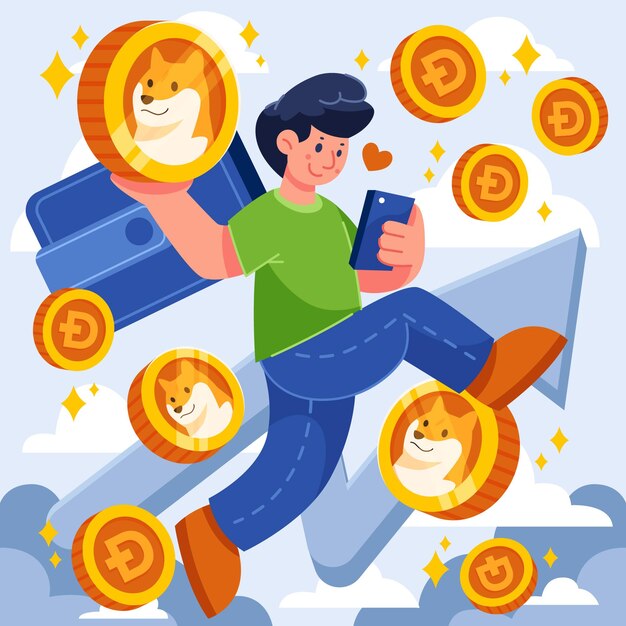Understanding the Key Differences Between Altcoins vs Stablecoins

In the rapidly evolving landscape of digital finance, various forms of cryptocurrencies have emerged, each with its own unique attributes and functions. This diverse ecosystem captures the imagination of investors and enthusiasts alike, showcasing a multitude of possibilities for transactions, investments, and financial innovation. Understanding the essence of these virtual currencies is essential for navigating this exciting realm.
Alternative cryptocurrencies often embody a spirit of experimentation and innovation, with numerous projects aiming to address specific market needs or offer novel solutions. Conversely, the realm of stable digital assets seeks to provide stability and predictability within the often volatile cryptocurrency market. By anchoring their value to established currencies or commodities, these assets offer a safety net for users in times of uncertainty.
Exploring the contrasts between these two types of cryptocurrencies reveals much about their intended purposes and market dynamics. Each category presents distinct opportunities and challenges, making it vital for participants in the digital economy to grasp these fundamental aspects for informed decision-making.
Defining Altcoins in the Crypto Market
In the realm of digital currencies, a diverse array of alternatives to Bitcoin exists, each offering unique features and utilities. These alternative coins have emerged as significant players within the cryptocurrency space, attracting attention from investors, developers, and enthusiasts alike. Their distinct characteristics and functionalities set them apart, creating a rich ecosystem that extends well beyond the original cryptocurrency.

Altcoins typically serve various purposes, ranging from enabling faster transactions to providing advanced privacy features or supporting decentralized applications. They often arise from innovative technological advancements or specific market needs not addressed by the leading currency. For many users, these alternatives represent new opportunities for investment and engagement within the blockchain environment.
Moreover, the emergence of numerous projects highlights the evolving nature of the cryptocurrency sector. Each coin may carry distinct use cases, protocols, and community governance, helping to foster a competitive atmosphere that encourages ongoing development and growth. This dynamic landscape continues to reshape the way digital value is perceived and utilized around the globe.
Characteristics that Define Stablecoins
Stablecoins serve as a bridge in the cryptocurrency ecosystem, offering a consistent value that appeals to users seeking security amidst market volatility. These digital assets are designed to maintain a stable price point, facilitating transactions and investments in a more predictable manner.
One of the primary attributes of stablecoins is their backing by tangible assets, which may include fiat currency, commodities, or other cryptocurrencies. This collateralization ensures that each stablecoin issued has a corresponding reserve, enhancing trust and reliability.
An additional feature is the mechanism employed to maintain price stability. Various models exist, such as pegging to a specific currency or utilizing algorithms that adjust supply based on demand fluctuations. This adaptability plays a crucial role in safeguarding their value.
Moreover, transparency is vital for stablecoins, with many projects providing regular audits and clear disclosure of their reserves. This openness fosters confidence among users and encourages wider adoption within the cryptocurrency community.
Finally, usability across different platforms and exchanges is essential for stablecoins. Their ability to function seamlessly in various trading environments contributes to their growing popularity, making them an attractive option for both casual and institutional investors.
Volatility Impact on Investment Strategies
The fluctuations in value within the cryptocurrency market have a profound influence on investment tactics. Investors often adjust their approaches based on the degree of price variability associated with different digital assets. This behavior is crucial as it affects not only potential returns but also the level of risk accepted by individuals in their pursuit of profit.
High volatility can present both opportunities and challenges. Investors may seek to capitalize on rapid price movements, devising tactics such as day trading or employing technical analysis to forecast potential gains. However, such strategies come with heightened risks, as abrupt price changes can also lead to significant losses.
Conversely, assets with low volatility provide a contrasting environment. These digital currencies typically exhibit minimal price swings, which might attract those who prefer a more stable investment landscape. Strategies centered around these stable assets may focus on long-term holding, aiming for gradual appreciation rather than quick returns.

Ultimately, the impact of volatility on investment methodologies requires a tailored approach. Investors must consider their risk tolerance, market conditions, and personal financial goals when navigating the diverse cryptocurrency ecosystem.
Use Cases for Altcoins and Stablecoins
The digital currency landscape is diverse, featuring a variety of tokens that serve distinct purposes in the financial ecosystem. Each type of cryptocurrency brings its unique advantages and applications, catering to the needs of different user groups. Understanding how these currencies are utilized can illuminate their roles in shaping modern finance.
Alternative cryptocurrencies often play a vital role in fostering innovation within blockchain technology. Many of these tokens are designed to support specific platforms, enabling functionalities such as decentralized applications (dApps), smart contracts, and tokenized assets. For instance, certain altcoins are utilized in governance systems that allow holders to influence network decisions, while others are created to enhance transaction speed or scalability. Additionally, some focus on niche markets, like gaming or supply chain management, providing tailored solutions to industry-specific challenges.
On the other hand, stable cryptocurrencies fulfill a crucial function by providing stability in an otherwise volatile market. These coins are pegged to stable assets, such as fiat currencies or commodities, which helps maintain a consistent value. Users often rely on stablecoins for their transactional benefits, including lower-cost remittances and seamless cross-border payments. Furthermore, they are commonly employed in decentralized finance (DeFi) applications, offering a safe means for trading, lending, and earning interest without the risks associated with price fluctuations.
In summary, both categories of digital assets serve important roles in the evolving landscape of blockchain technology. While alternative tokens often push the boundaries of innovation, stable currencies provide a safe haven for users seeking predictability in their transactions. Together, they contribute to a multifaceted financial ecosystem that continues to expand and adapt.
Comparing Market Performance Trends
The cryptocurrency market is characterized by the distinctive trajectories of various digital assets, each reflecting unique reactions to external economic conditions, investor sentiment, and intrinsic factors. Market fluctuations can reveal the resilience or vulnerability of these assets, showcasing their respective behaviors in varying situations. This section delves into how these assets exhibit contrasting performance patterns, highlighting the effects of volatility and stability.
| Type of Asset | Market Volatility | Price Stability | Market Influencers |
|---|---|---|---|
| Dynamic Assets | High | Low | Market Trends, Speculation, News Events |
| Stable Assets | Low | High | Regulatory News, Economic Stability |
While dynamic assets are prone to significant price swings, often driven by speculation or market hype, stable assets maintain a more consistent value. This stability is crucial for users looking for reliability during turbulent market conditions. A closer examination of these variables sheds light on the underlying mechanisms that govern performance in this rapidly evolving landscape.
Regulatory Considerations for Each Type
The landscape of digital currencies is shaped significantly by regulatory frameworks that influence how various tokens operate within the financial ecosystem. Understanding these frameworks is crucial for stakeholders, as compliance or lack thereof can greatly affect a project’s viability and acceptance in the market.
For one category of cryptocurrency, regulations often address issues such as securities classification, anti-money laundering (AML), and consumer protection. These tokens may fall under existing financial laws, requiring issuers to adapt their structures and offerings to comply with legal standards. In some cases, this means obtaining licenses that allow them to operate legally in specific jurisdictions.
On the other hand, the regulatory approach to another class of digital assets tends to focus on their role as stable stores of value. Authorities may scrutinize these tokens for their backing mechanisms, transparency measures, and overall stability. This scrutiny aims to ensure that they can genuinely maintain their value, which is crucial for consumer trust and market integrity.

Both categories face unique challenges, such as navigating the evolving landscape of policies and ensuring that they meet the expectations of regulators around the world. Striking a balance between innovation and compliance is essential for long-term success and overall acceptance within mainstream finance.
Q&A: Altcoins vs stablecoins key differences explained
What are altcoins and how do they differ from stablecoins?
Altcoins, or alternative coins, refer to any cryptocurrency other than Bitcoin. They encompass a wide variety of digital currencies that can serve different purposes, from facilitating transactions to powering decentralized applications. Stablecoins, on the other hand, are designed to maintain a stable value by pegging their prices to traditional currencies, commodities, or other assets. This key difference lies in their purpose: while altcoins can be highly volatile and speculative, stablecoins aim to provide stability and are often used for trading, remittances, and as a medium of exchange in cryptocurrency markets.
Why are stablecoins important in the cryptocurrency ecosystem?
Stablecoins play a crucial role in the cryptocurrency ecosystem by providing a stable store of value that can be used for transactions without the price volatility associated with other cryptocurrencies. This is particularly important for traders and investors who wish to hedge against market fluctuations. Stablecoins also facilitate the easy transfer of value between different cryptocurrencies and allow users to move funds in and out of crypto markets without relying heavily on fiat currency. As such, they enhance liquidity, stabilize trading pairs, and can also be useful for decentralized finance (DeFi) applications.
Can you give examples of popular altcoins and stablecoins?
Certainly! Some popular altcoins include Ethereum (ETH), which is widely known for its smart contract capabilities; Ripple (XRP), which focuses on speeding up cross-border transactions; and Litecoin (LTC), often seen as the silver to Bitcoin’s gold due to its faster transaction times. On the stablecoin side, Tether (USDT) is one of the most widely used stablecoins, pegged to the US dollar; USD Coin (USDC), a regulated stablecoin also pegged to the dollar; and DAI, which is an algorithmic stablecoin backed by other cryptocurrencies. Each of these coins serves different functions and appeals to various segments of the cryptocurrency market.
What are the risks associated with investing in altcoins compared to stablecoins?
Investing in altcoins generally carries higher risks due to their volatility and susceptibility to market sentiments, regulatory changes, and technological developments. Many altcoins lack adequate liquidity and may be subject to larger price swings, making them riskier for investors. Stablecoins, while they can also face risks—such as regulatory scrutiny, the potential for de-pegging from their underlying asset, or counterparty risk—are generally seen as a safer investment within the context of cryptocurrencies because their value is intended to remain stable. However, investors should be aware that not all stablecoins are created equal, and thorough research is necessary to understand their underlying mechanisms and risks.
How do the use cases for altcoins and stablecoins differ?
Altcoins and stablecoins serve distinct use cases within the cryptocurrency landscape. Altcoins often seek to offer innovative solutions, enable decentralized applications, or introduce new methods of transaction. For instance, Ethereum allows developers to create decentralized applications (dApps) on its platform, while other altcoins might focus on privacy, scalability, or specific industry applications. Stablecoins, in contrast, are primarily used as stores of value, mediums of exchange, or a means of transferring capital without significant volatility. They are commonly utilized in trading, providing liquidity, and enabling local and cross-border payments without the risks associated with other cryptocurrencies. This differentiation in use cases plays a pivotal role in how users and investors approach these digital assets.
What are the main differences between altcoins and stablecoins?
Altcoins and stablecoins serve different purposes within the cryptocurrency ecosystem. Altcoins, short for alternative coins, refer to all cryptocurrencies other than Bitcoin. They can vary greatly in terms of technology, use cases, and market behavior. These coins may offer innovative features, promise enhanced scalability, or cater to niche markets. On the other hand, stablecoins are a specific type of cryptocurrency designed to maintain a stable value. They are typically pegged to a reserve asset, such as fiat currency or commodities, which helps reduce volatility. While altcoins can experience significant price fluctuations and may be regarded as speculative investments, stablecoins aim to provide liquidity and stability for users, making them ideal for transactions, remittances, or as a hedge against the volatility typical in the broader crypto market. In essence, the key difference lies in their purpose and stability, with altcoins offering potential for growth and innovation, while stablecoins prioritize security and predictability in value.
What are the main differences between altcoins and algorithmic stablecoins in the crypto space?
Altcoins are typically cryptocurrencies that are alternatives to bitcoin, offering unique features or use cases. Algorithmic stablecoins, on the other hand, are designed to maintain price stability using algorithms rather than being backed by fiat or physical assets.
How does market cap help determine the value and potential of altcoins compared to bitcoin?
Market cap is calculated by multiplying the price of a cryptocurrency by its circulating supply. It helps investors compare altcoins and bitcoin by showing the overall value and adoption level in the crypto space, indicating potential for growth or stability.
Why do stablecoins like Tether offer advantages compared to mining-based altcoins?
Stablecoins like Tether provide price stability, making them ideal for trading or as a store of value, while mining-based altcoins rely on proof-of-work consensus mechanisms, which can lead to significant price volatility and higher energy consumption.
Should you hold altcoins or stablecoins to reduce exposure to major price swings in the cryptocurrency market?
Holding stablecoins can help reduce exposure to major price swings, as they are designed to maintain a stable value. Altcoins, while more volatile, can offer higher potential returns but carry greater risk in the cryptocurrency exchange market.
What types of altcoins are most commonly used, and how do they compare to stablecoins?
Altcoins can be categorized into utility tokens, security tokens, and mining-based cryptocurrencies. Stablecoins are a specific type of altcoin designed to maintain price stability, making them more suitable for transactions and savings compared to more volatile altcoins.





